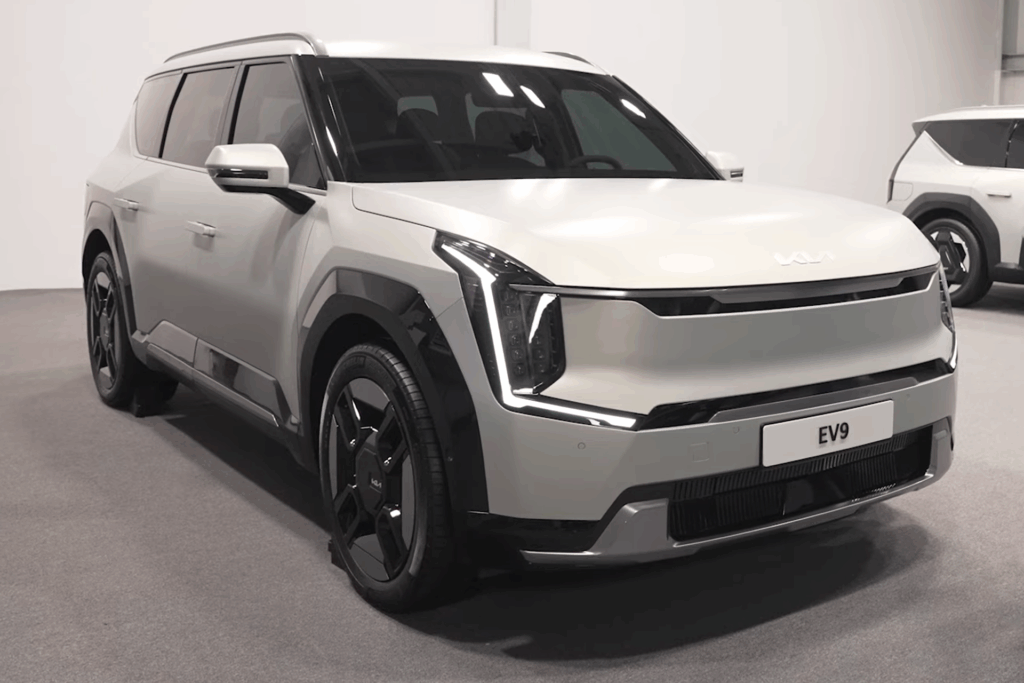
Alright, let’s talk cars! Specifically, let’s talk about the incredible world of Japanese performance machines, because trust us, they do things differently. Their approach isn’t about flashy superficiality; it’s a deep dive into substance over style, a methodical and calculated journey where engineering and purpose reign supreme. Think durability for a full lap of Fuji Speedway or tackling a challenging special stage, rather than just plush interiors or a premium fit and finish.
What makes these cars truly special is their relentless dedication to a stated brief, pushing boundaries in every conceivable way, from sky-high rev limits to surprisingly accessible retail prices. Whether they’re chasing the more ambiguous, sensational definition of the thrill of driving—like the mind-bending Lexus LFA, the nimble Toyota GR86, and the perpetually grinning Mazda MX-5—or relentlessly pursuing raw speed against the clock, as exemplified by the Nissan GT-R and the Honda Civic Type R, their commitment is unwavering.
We absolutely adore Japanese performance cars here. Sure, some might take an age to get here, or perhaps overstay their welcome in the rumor mill, but the sheer depth of their talents is always, *always* worth the wait and worth sticking around for. The Porsche 911 is, without a doubt, one of the greatest sports cars ever crafted – no arguments there. But let’s be real, not everyone has six figures just waiting to be dropped on a car. The good news, the *great* news, is that you don’t have to break the bank for that same level of excitement, that razor-sharp handling, and even surprising everyday usability. Plenty of machines out there deliver all that, and often, with even more soul and character. So, prepare to have your preconceptions challenged as we dive into some of the absolute best Japanese cars we’ve ever had the pleasure of testing, cars that prove pure driving fun doesn’t need a Stuttgart badge.
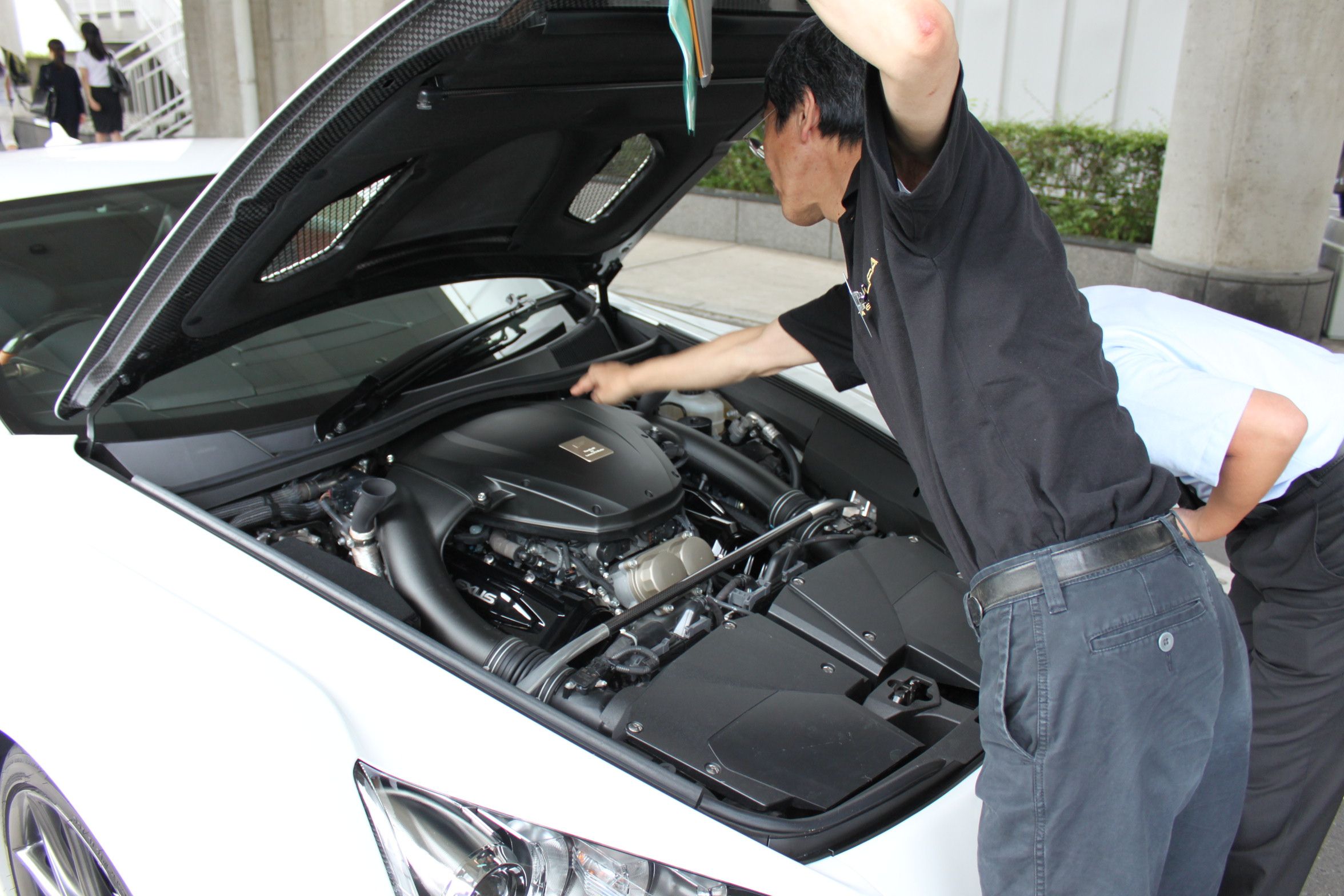
1. **Lexus LFA**When we talk about Japanese icons that transcend mere transportation, the Lexus LFA undeniably reigns supreme in the eyes of many. It’s the Japanese car that could very well claim the unparalleled honor of being the only one from the East to be truly, unequivocally accepted into the upper echelons of supercardom, at least when viewed through the lens of posterity. And frankly, as it should be, because this machine is a pure masterpiece.
This isn’t just a car; it’s the poster child for that specific camp of Japanese car that seems to take an absolute age to arrive on the scene. The LFA is what happens when iterative perfectionism goes completely unchecked within the confines of a multinational car company—a company, mind you, with bottomless pockets and a CEO so determined you’d think he was personally hand-tuning every bolt. The result is something truly legendary.
At its heart beats a bespoke Yamaha-tuned V10 engine, a marvel of engineering that revs with such ferocious speed that an old-school analogue tachometer simply cannot keep up with its dizzying ascent. This isn’t just power; it’s an auditory symphony, a mechanical choir.
And oh, that sound! The context explicitly mentions its roar sounds “downright angelic” thanks to Yamaha’s meticulous tuning. It’s an engine note that isn’t just heard but felt deep in your bones, a sonic signature that sets it apart from virtually anything else on the road, European or otherwise.
The LFA was Lexus’s audacious answer to the established titans of European supercar royalty, machines like the Ferrari 458 or the venerable Porsche Carrera. It was a bold statement, showcasing the company’s absolute mastery of engineering and an almost obsessive attention to detail. This wasn’t just a competitor; it was a redefinition of what a Japanese supercar could be.
Car Model Information: 2012 Lexus LFA Coupe 2D
Name: Lexus LFA
Manufacturer: Toyota
ModelCode: LFA10
Production: December 2010 – December 2012,500 units
Assembly: Toyota, Aichi
Class: Sports car
BodyStyle: coupé
Layout: Front mid-engine, rear-wheel-drive
Designer: Kengo Matsumoto (chief designer)
Engine: Toyota LR engine#1LR-GUE,Firing order#Even and uneven firing order,V10 engine
Transmission: List of Aisin transmissions#Longitudinal rear-wheel drive (transaxle),Automated manual transmission
Wheelbase: 2605 mm
Abbr: on
Length: 4505 mm
Width: 1895 mm
Height: 1220 mm
Weight: 3483 lb
Order: flip
Categories: All Wikipedia articles written in British English, All articles containing potentially dated statements, All articles with dead external links, Articles containing Japanese-language text, Articles containing potentially dated statements from 2020
Summary: The Lexus LFA is a two-door sports car produced between 2010 and 2012 by the Japanese carmaker Toyota under its luxury marque, Lexus. Lexus built 500 units over its production span of two years. The development of the LFA, codenamed TXS, began in early 2000. The first prototype was completed in June 2003, with regular testing at the Nürburgring starting in October 2004. Over the decade, numerous concept cars were unveiled at various motor shows. The first concept appeared in January 2005 at the North American International Auto Show as a design study. In January 2007, a more aerodynamic design was introduced, and in January 2008, a roadster version was showcased. The production version of the LFA debuted at the Tokyo Motor Show in October 2009—commemorating Lexus’s 20th anniversary—and the official manufacture of the car began on 15 December 2010 at the Motomachi production facility in Toyota, Aichi. The 4.8 L 1LR-GUE V10 engine, as fitted to the LFA, produces a power output of 412 kilowatts (560 PS; 553 hp) and 480 newton-metres (350 lb⋅ft), sufficient to give the car a 0–97 km/h (60 mph) of 3.6 seconds and a maximum speed of 325 kilometres per hour (202 mph). The LFA’s body mass is composed of sixty-five per cent carbon fibre-reinforced polymer, and incorporates various lightweight materials such as aluminium, titanium and magnesium. Lexus ended production of the LFA on 17 December 2012, two years and two days after it commenced. The LFA has received awards including Road & Track’s “Best of the 2009 Tokyo Auto Show” and Top Gear’s “5 Greatest Supercars of the Year”.
Get more information about: Lexus LFA
Buying a high-performing used car >>>
Brand: Lexus Model: LFA
Price: $849,990 Mileage: 4,724 mi.
Read more about: Beyond the Sticker Price: Unveiling Cars with the Highest and Lowest Long-Term Maintenance Costs

2. **Nissan GT-R**If you’re going to challenge the Porsche 911, you better bring a serious weapon, and the Nissan GT-R—affectionately, or perhaps reverently, nicknamed “Godzilla”—does exactly that. This moniker wasn’t just pulled out of thin air; it was earned through an incredible, almost monstrous, performance that fearlessly rivaled automotive giants like Porsche 911 Turbos and Audi R8s. And here’s the kicker: it did it all for a fraction of their price.
The GT-R isn’t a newcomer to the arena of high-performance driving. It boasts a long and storied history in motorsport, racking up wins in multiple categories and proving its mettle against the toughest competition. This isn’t merely a fast car; it’s a proven champion, a testament to Nissan’s unwavering commitment to engineering prowess and raw speed.
Its design embodies the very essence of the Japanese approach to performance: substance over style. The GT-R is a marvel of methodical and calculated engineering, majoring on pure purpose and unyielding durability, whether it’s for a blistering lap of Fuji or a special stage on a rally course. Every component, every line, serves a function to achieve peak performance.
This is a machine built for raw speed against the clock, pushing all sorts of boundaries that typically define the supercar realm. The GT-R delivers a visceral, exhilarating driving experience that few cars, regardless of price tag, can truly match. It’s a car that demands respect, not just for its speed, but for the engineering genius beneath its skin.
Ultimately, the GT-R offers an engaging and electrifying drive that makes you question why anyone would pay significantly more for a comparable European badge. It delivers that sharp handling and incredible performance that enthusiasts crave, all while maintaining a relatively accessible entry point into the world of top-tier sports cars. It’s a true icon, and a pure thrill to pilot.
Car Model Information: 2020 Nissan GT-R Premium Dual-clutch 6-Speed Transmission
Name: Nissan GT-R
Manufacturer: Nissan
ModelCode: R35
Production: December 2007 – August 2025
ModelYears: 2009–2024 (North America)
Assembly: Kaminokawa, Tochigi
Designer: unbulleted list
Class: Sports car
BodyStyle: 2+2 (car body style)
Layout: front-engine, four-wheel-drive layout
Platform: Nissan Premium Midship
Related: Nissan Juke-R
Engine: Nissan VR engine#VR38DETT,V6 engine
Powerout: unbulleted list
Abbr: on
Order: flip
Transmission: BorgWarner
Wheelbase: 2780 mm
Length: unbulleted list
Width: unbulleted list
Height: unbulleted list
Weight: unbulleted list
Predecessor: Nissan Skyline GT-R
Sp: uk
Categories: 2010s cars, 2020s cars, All-wheel-drive vehicles, All Wikipedia articles written in British English, Articles with hAudio microformats
Summary: The Nissan GT-R is a sports car, built by Japanese marque Nissan from 2007 to 2025. It has a 2+2 seating layout and is also considered a grand tourer. The engine is front-mid mounted and drives all four wheels. It succeeds the Nissan Skyline GT-R, a high-performance variant of the Nissan Skyline. Although this model was the sixth-generation to bear the GT-R name, it is no longer part of the Skyline line-up. The car was built on the PM platform, derived from the FM platform used in the Skyline and Nissan Z models. Production was conducted in a shared production line at Nissan’s Tochigi plant in Japan. As per Nissan’s intention of creating a world beating sports car, the GT-R brand was revived as part of the Nissan Revival Plan. Overall development began in 2000, following seven years of development and testing, including the introduction of two concept models in 2001 and 2005. The production version of the GT-R was unveiled at the 2007 Tokyo Motor Show. The GT-R was a brand-new car built on the PM platform, and featured innovative concepts and technologies, such as advanced aerodynamics, the VR38DETT engine, an active suspension system and the ATTESA E-TS Pro all-wheel-drive system; it the first ever rear mounted independent transaxle all-wheel-drive vehicle. It was one of the first production cars to feature launch control and a dual-clutch transmission. The overall body was made out of steel, aluminium and carbon-fibre. Unlike its predecessors, the GT-R was offered worldwide. It received various facelifts and updates comparable with the competition, and several special editions were offered during its prolonged production span. The car is used in motorsports, notably winning championships in the FIA GT1 World Championship, Super GT and in various GT3 racing series, including the GT World Challenge. It is well received among enthusiasts and automotive publications, British motor magazine Top Gear claimed it as “one of the most incredible cars of any kind ever built”, due its exceptional performance and practicality given at an affordable price. Being one of the fastest production cars—as it set the record for the fastest accelerating four-seater production car—it has won numerous notable accolades such as the World Performance Car of The Year among many others. Sales in the Australian market were discontinued due to new side impact regulations. The European market, including the United Kingdom, were also suspended, with new noise regulations. Followed by the suspension of sales in North America, sales in Japan and other markets remained until August 2025, ending production of the GT-R after 18 years and nearly 48,000 units produced.
Get more information about: Nissan GT-R
Buying a high-performing used car >>>
Brand: Nissan Model: GT-R
Price: $144,995 Mileage: 11,932 mi.
Read more about: The Unvarnished Truth: 12 Car Models Where Design Cues Demanded More Than Comfort in 2025
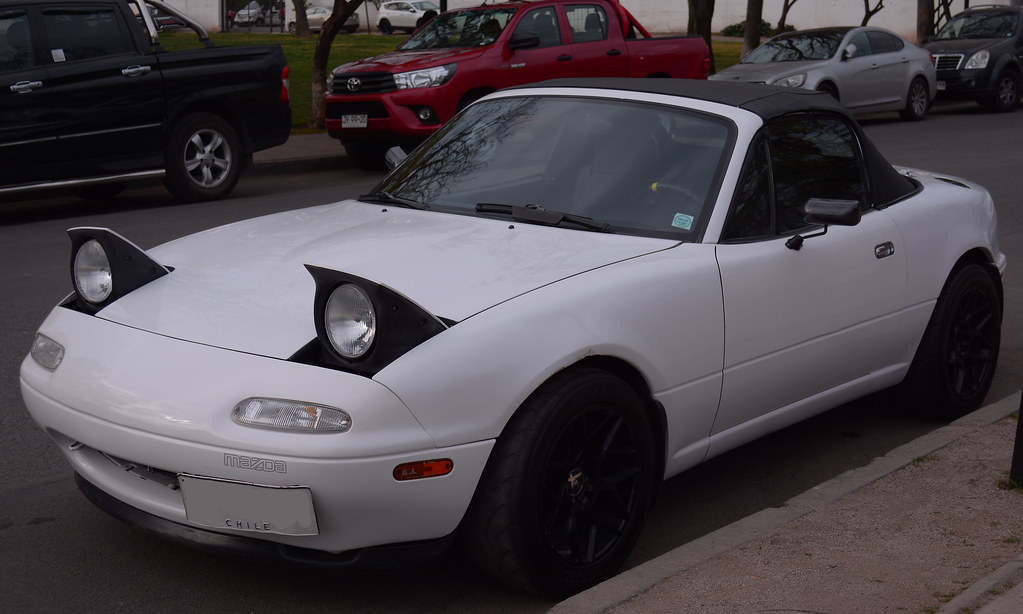
3. **Mazda MX-5**When Mazda set out to create the MX-5, they weren’t chasing outright horsepower figures or segment-leading luxury. Instead, they envisioned a pure, unadulterated “toy car”—a loving homage to the tiny, spirited British and Italian sports cars that captured hearts in the 1960s and 70s. Their brief was beautifully simple: to revive the fun-to-drive roadster, making driving joy accessible again.
And oh, did they ever succeed! The Mazda MX-5, or Miata as it’s known to many, isn’t about brute force. In fact, it’s explicitly stated that it isn’t “super powerful given its size.” But what it lacks in raw horsepower, it more than makes up for with an agile chassis and a driver-first experience that is second to none. This car is about the intimate connection between driver and machine.
Its continued existence, decades after its debut, is a testament to its unwavering commitment to its roots. The MX-5 is built on a philosophy of lightweight design and near-perfect balance, attributes that make it incredibly engaging and responsive. Whether you’re hitting the track for some spirited laps or simply carving up a winding backroad, every turn, every input, is met with pure, unadulterated joy. It is, quite simply, all about precision, not power.
Under the hood, the current iteration features a 2.0-liter Skyactiv-G engine that produces 181 horsepower. Now, for some, that might not sound like a lot, especially when comparing to the mighty Porsche 911. However, in a car this small and perfectly balanced, 181 horsepower is absolutely all you need to unlock an endlessly entertaining experience. It’s a testament to the idea that light weight and balance trump outright numbers when it comes to fun.
The Miata reminds us all why lightweight sports cars will always hold a special place in our hearts. It delivers an experience that’s just as engaging—if not more so—than many pricier alternatives. It is a masterclass in how to engineer pure, joyful driving, proving that you don’t need a prestige badge or a six-figure price tag to have an absolute blast on the road.
Car Model Information: 2019 Mazda MX-5 Miata RF Grand Touring
Name: Mazda MX-5
Manufacturer: Mazda
Aka: unbulleted indent list
Production: 1989–present
Assembly: Hiroshima
Class: Roadster (car),sports car
Layout: unbulleted indent list
Platform: List of Mazda model codes#Model codes
Categories: 1990s cars, 2000s cars, 2010s cars, 2020s cars, All Wikipedia articles in need of updating
Summary: The Mazda MX-5 is a lightweight two-seat sports car manufactured and marketed by Mazda. In Japan, it is marketed as the Mazda Roadster or, previously, as the Eunos Roadster. In the United States it is sold as the Mazda Miata (), and it was formerly marketed under the same name in Canada. The name miata derives from Old High German for “reward”.
Produced at Mazda’s Hiroshima plant, the MX-5 debuted in 1989 at the Chicago Auto Show. It was created under the design credo Jinba ittai, meaning “unity of horse and rider”. Noted for its small, light, balanced and minimalist design, the MX-5 has often been described as a successor to the 1950s and 1960s Italian and British roadsters, with the Lotus Elan serving as a design benchmark.
Each generation is identified by a two-letter code, beginning with the first generation NA. The second generation NB launched in 1998, followed by the third generation NC in 2005, and the fourth generation ND in 2015.
More than one million MX-5s have been sold, making it the best-selling two-seat convertible sports car in history.
Get more information about: Mazda MX-5
Buying a high-performing used car >>>
Brand: Mazda Model: MX-5
Price: $24,981 Mileage: 48,370 mi.
Read more about: Performance Over Perception: 10 Cars That Don’t Deserve Their Bad Reputations
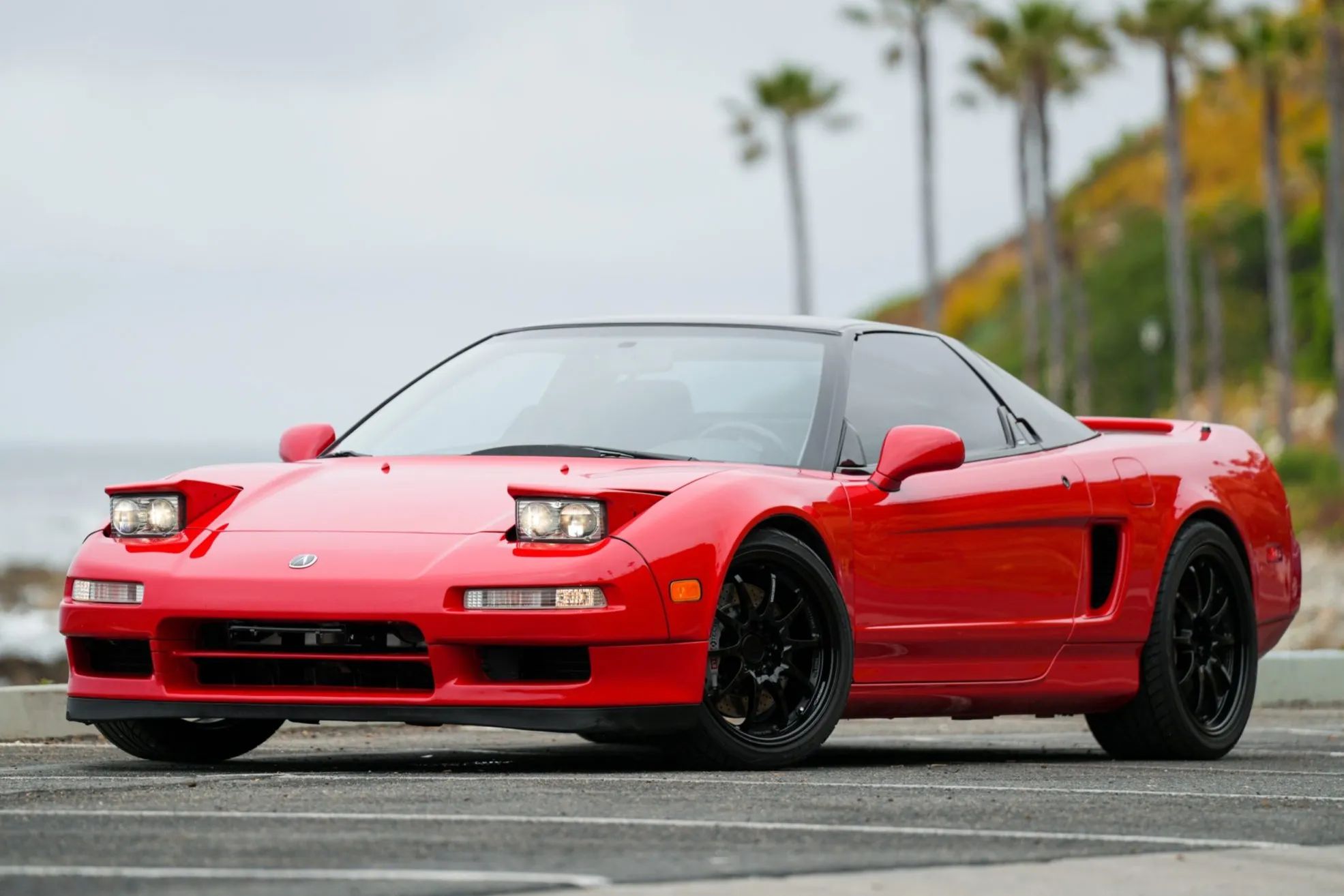
4. **Acura NSX**Picture this: 1990. The automotive world was largely predictable, especially when it came to supercars, which were almost exclusively the domain of European manufacturers. Then, out of nowhere, the Acura NSX debuted, and it took everyone completely aback. This wasn’t just another sports car; it was a revelation, renowned instantly for its truly exceptional handling that challenged the established order.
The NSX didn’t just play in the same sandbox as the titans; it delivered what was proudly described as “Ferrari-level performance.” This was an almost unheard-of claim for a Japanese car at the time, but the NSX backed it up with every turn of the wheel and every surge of its engine. It wasn’t just fast; it was surgically precise, offering a driving experience that rivaled the best.
But here’s the kicker, the secret sauce that truly made it a game-changer: this Ferrari-level performance was miraculously meshed with Honda-level reliability. For years, supercar ownership meant exorbitant maintenance costs and temperamental machines. The NSX offered blistering performance without the headaches, creating a new paradigm for what a high-performance vehicle could be.
And to top it all off, it came with a “reasonable price tag for what it could do.” This combination—elite performance, bulletproof reliability, and accessible pricing—was utterly revolutionary. The Acura NSX wasn’t just a car; it was a statement, demonstrating Japan’s ability to push boundaries and pursue the kind of ambiguous, sensational thrill of driving that many thought only Italy could deliver.
Car Model Information: 1992 Acura NSX Base
Name: Honda NSX
Caption: Acura NSX (first generation, NA2) along with some NA1 NSX cars
Manufacturer: Honda
Aka: Acura NSX (North America)
Production: 1990–2006 (NA1/2),2016–2022 (NC1/2)
Class: Sports car
ModelYears: 1991–2006,2017–2023
Categories: 2000s cars, 2010s cars, 2020s cars, 24 Hours of Le Mans race cars, All-wheel-drive vehicles
Summary: The Honda NSX, marketed in North America as the Acura NSX, is a two-seater, rear mid-engined, rear-wheel drive sports car manufactured by Honda.
The origins of the NSX trace back to 1984, with the HP-X (Honda Pininfarina eXperimental) concept, for a 3.0 L (180 cu in) V6 rear mid-engine, rear-wheel drive sports car. Honda, with the intention of meeting or exceeding the performance of the then V8 engine Ferrari range, committed to the project, aiming at both reliability and a lower price. The concept evolved and had its name changed to NS-X, which stood for “New”, “Sportscar” “eXperimental”, although the production model launched as the NSX.
Get more information about: Honda NSX
Buying a high-performing used car >>>
Brand: Acura Model: NSX
Price: $93,999 Mileage: 62,145 mi.
Read more about: Beyond the Showroom: Why U.S. Automotive Conferences and Trade Shows Are Crucial Engines for Industry Growth and Innovation
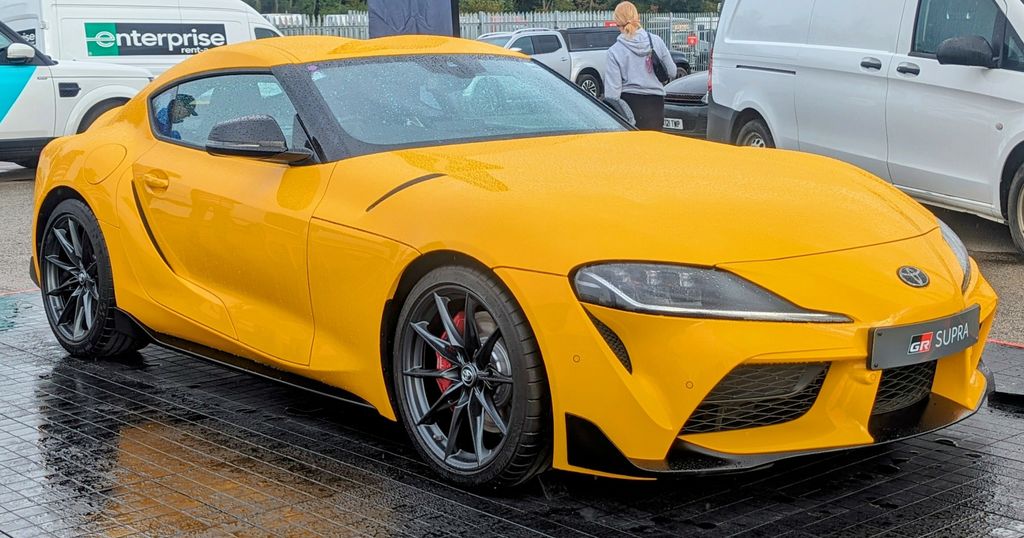
5. **Toyota Supra**Ah, the Toyota Supra. Just the name conjures images of speed, power, and limitless potential. The beautifully designed Toyota Supra has long been a firm favorite for drag racers and car enthusiasts worldwide, and for very good reason. Its engine, a true marvel, lends itself astonishingly well to modifications, making it a blank canvas for those chasing even more power and performance.
What truly sets the Supra apart, especially when pitted against its European counterparts, is its astonishing robustness and tunability. This isn’t just a car built for speed; it’s built to withstand the rigors of aftermarket enhancements, allowing enthusiasts to unlock even greater levels of performance without fear. It’s a testament to its formidable engineering.
Now, let’s talk about the modern iteration, the GR Supra. This is far more than just a nostalgic throwback name; it is a serious sports car that possesses the legitimate chops to go toe-to-toe with much, much pricier machines. At around $56,000, it remains well under a 911’s price tag, yet it delivers a level of performance that genuinely makes you question whether shelling out that extra money is truly worth it.
Under the hood lies a potent 3.0-liter turbocharged inline-six engine, a true powerhouse capable of churning out 382 horsepower and a robust 368 lb-ft of torque. These figures aren’t just for show; they translate directly into thrilling acceleration, rocketing the GR Supra from 0-60 mph in a blistering 3.9 seconds. That’s serious speed, delivered with a precision and urgency that satisfies even the most demanding drivers.
Sure, some folks might have grumbled a bit about its BMW roots when it first arrived, and automotive purists always have their opinions. But at the end of the day, when the rubber meets the road, the Supra drives exactly like a true sports car should: fast, incredibly sharp, and endlessly entertaining. It’s a compelling argument for accessible performance that delivers thrills in spades, proving that you don’t need to conform to old-world heritage to build a truly great driver’s car.
Car Model Information: 1995 Toyota Supra SZ
Name: Toyota Supra
Caption: Toyota GR Supra (J29/DB)
Manufacturer: Toyota
Aka: unbulleted list
Production: unbulleted list
Class: Sports car
BodyStyle: fastback,coupé
Layout: Front-engine, rear-wheel-drive layout
Predecessor: Toyota Celica (A20)
Categories: 1980s cars, 1990s cars, 2000s cars, 2010s cars, 2020s cars
Summary: The Toyota Supra is a sports car and grand tourer manufactured and developed by the Toyota Motor Corporation beginning in 1978. The name “supra” is a definition from the Latin prefix, meaning “above”, “to surpass” or “go beyond”. The initial four generations of the Supra were produced from 1978 to 2002. The fifth generation has been produced since March 2019 and later went on sale in May 2019. The styling of the original Supra was derived from the Toyota Celica, but it was longer. Starting in mid-1986, the A70 Supra became a separate model from the Celica. In turn, Toyota also stopped using the prefix Celica and named the car Supra. Owing to the similarity and past of the Celica’s name, it is frequently mistaken for the Supra, and vice versa. The first, second and third generations of the Supra were assembled at the Tahara plant in Tahara, Aichi, while the fourth generation was assembled at the Motomachi plant in Toyota City. The 5th generation of the Supra is assembled alongside the G29 BMW Z4 in Graz, Austria by Magna Steyr. The Supra traces much of its roots back to the 2000GT owing to an inline-6 layout. The first three generations were offered with a direct descendant to the Crown’s and 2000GT’s M engine. Interior aspects were also similar, as was the chassis code “A”. Along with this name, Toyota also included its own logo for the Supra. It was derived from the original Celica logo, being blue instead of orange. This logo was used until January 1986, when the A70 Supra was introduced. The new logo was similar in size, with orange writing on a red background, but without the dragon design. That logo, in turn, was on Supras until 1991 when Toyota switched to its current oval company logo. The dragon logo was a Celica logo regardless of what colour it was. It appeared on the first two generations of the Supra because they were officially Toyota Celicas. The dragon logo was used for the Celica line until it was also discontinued. In 1998, Toyota ceased sales of the fourth-generation Supra in the United States. Production of the fourth-generation Supra for worldwide markets ended in 2002. In January 2019, the fifth-generation Supra, which was co-developed with the G29 BMW Z4, was introduced.
Get more information about: Toyota Supra
Buying a high-performing used car >>>
Brand: Toyota Model: Supra
Price: $49,999 Mileage: 16,556 mi.
Read more about: America’s Top 10 Automotive Loyalty Programs: Driving Retention and Value in 2024
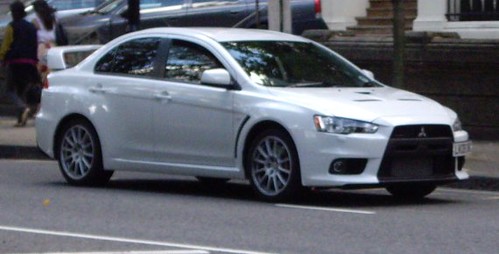
6. **Mitsubishi Lancer Evolution**When we talk about cars forged in the crucible of motorsport, the Mitsubishi Lancer Evolution, universally known as the “Evo,” immediately springs to mind. This wasn’t some marketing gimmick; this car was quite literally created by the Japanese company with one singular, overarching goal: unadulterated rally performance. Every fiber of its being was dedicated to conquering gravel, dirt, and tarmac alike.
Its legendary success in the World Rally Championship wasn’t just a series of victories; it was a phenomenon. These triumphs didn’t just add trophies to Mitsubishi’s cabinet; they earned the Evo a dedicated, fervent cult following among street racers and performance enthusiasts across the globe. It became more than a car; it became a symbol of accessible, raw, competition-bred performance.
The Evo’s appeal, particularly among street racers, was so profound that its following often surpassed that of established rivals like the VW Golf R and the iconic Lancia Delta. This speaks volumes about its visceral appeal and its genuine ability to deliver thrilling, track-capable performance in a road-legal package. It was a car that didn’t just promise; it delivered.
This machine perfectly encapsulates the core Japanese approach to performance: a steadfast focus on engineering and purpose, rather than superficial aesthetics. The Evo was built for durability on a special stage, a hardcore machine designed to endure and excel under the most punishing conditions. Its aggressive styling wasn’t just for show; it was a direct reflection of its uncompromising purpose.
Ultimately, the Mitsubishi Lancer Evolution was a rally car for the road, through and through. It delivered an uncompromised driving experience that felt raw, connected, and endlessly rewarding. For those who craved motorsport heritage and genuine, exhilarating performance without the Porsche 911 price tag, the Evo was, and remains, an undisputed champion. It’s a true icon of purpose-driven engineering and driving excitement.
Alright, let’s keep the pedal to the metal and dive into six more incredible Japanese driving machines that prove you don’t need a six-figure price tag or a Stuttgart badge to experience pure, unadulterated automotive exhilaration. These are the cars that continue to challenge norms, push boundaries, and deliver thrills that stick with you long after the engine cools.
Car Model Information: 2019 Acura RDX Technology Package
Name: Mitsubishi Lancer Evolution
Caption: Mitsubishi Lancer Evolution X
Manufacturer: Mitsubishi Motors
Production: 1992–2016
BodyStyle: sedan (car),station wagon
Assembly: Japan:,{{blist,Okazaki, Aichi,Kurashiki, Okayama
Class: Sport compact car
Layout: Front-engine, four-wheel-drive
Engine: Straight-4,Mitsubishi Sirius engine#4G63,Mitsubishi 4B1 engine#4B11T
Transmission: Twin Clutch SST,5-speed automatic (2002, 2006–2007),manual transmission,6-speed manual (2003–2008)
Predecessor: Mitsubishi Galant VR-4
Related: Mitsubishi Lancer,Mitsubishi Lancer WRC,Mitsubishi Racing Lancer
Categories: 2000s cars, 2010s cars, All-wheel-drive vehicles, All Wikipedia articles in need of updating, All Wikipedia articles that are incomprehensible
Summary: The Mitsubishi Lancer Evolution, popularly referred to as the “Evo”, is a sports sedan and rally car based on the Lancer that was manufactured by Japanese manufacturer Mitsubishi Motors from 1992 until 2016. There have been ten official versions to date, and the designation of each model is most commonly a Roman numeral. All generations use two-litre intercooled turbo inline four-cylinder engines and all-wheel drive systems.
The Lancer was originally intended only for Japanese markets, but demand on the “grey import” market led the Evolution series to be offered through Ralliart dealer networks in the United Kingdom and in various European markets from around 1998. Mitsubishi decided to export the eighth generation Evolution to the United States in 2003 after witnessing the success Subaru had in that market the previous year with the Subaru Impreza WRX.
All domestic-market versions, until the release of the Evolution IX in 2005, were limited by a gentlemen’s agreement between Japanese car manufacturers to advertise no more than 280 PS (206 kW; 276 hp). However, sources say Mitsubishi had already been producing cars with more power but had been underrating the official power outputs in order to comply with the agreement. Therefore, each subsequent version has unofficially evolved above the advertised power figures, with the Japanese-market Evolution IX reaching an alleged output of around 320 PS (235 kW; 316 hp). Various special versions available in other markets, particularly the UK, have official power outputs up to 446 PS (328 kW; 440 hp).
The tenth and final generation of the Lancer Evolution, the Evolution X, was launched in Japan in 2007, and overseas markets in 2008. The Evolution X was produced for almost 10 years until Mitsubishi retired the Lancer Evolution in April 2016.
Get more information about: Mitsubishi Lancer Evolution
Buying a high-performing used car >>>
Brand: Mitsubishi Model: Lancer Evolution
Price: $28,599 Mileage: 12,696 mi.
Read more about: Beyond the Myth: Six Japanese Car Brands Raising Reliability Concerns for 2025 Car Buyers
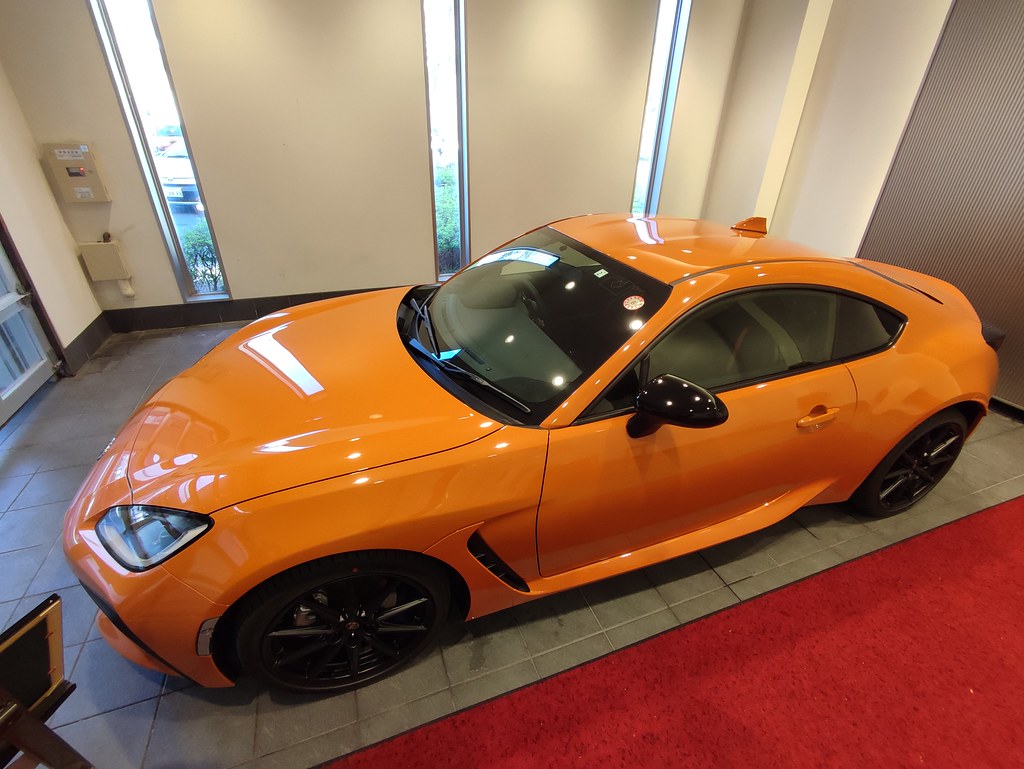
7. **Toyota GR86**If there’s one car that embodies the spirit of accessible, pure driving fun, it’s the Toyota GR86. This machine is a masterclass in how to deliver exhilarating rear-wheel-drive dynamics without demanding a six-figure sum, making it an absolute joy for enthusiasts who prioritize connection and agility over outright horsepower numbers. It’s the kind of car that makes you grin through every single corner, reminding you that driving doesn’t have to be a wallet-draining endeavor to be truly special.
At its core, the GR86 is all about precision and engagement. It boasts sharp handling that allows for immediate, intuitive communication between driver and road. This isn’t just about going fast in a straight line; it’s about the dance, the feedback, and the sheer delight of a car that responds eagerly to every input, making you feel completely in control and utterly connected to the tarmac. It stands as a testament to the idea that light weight and balance are often far more important than brute power when it comes to pure driving enjoyment.
Under the hood, the GR86 is powered by a 2.4-liter flat-four Boxer engine. While the 228 horsepower and 184 lb-ft of torque might not seem earth-shattering on paper, in a car this light and well-sorted, it is genuinely all you need to unlock an endlessly entertaining experience. Coupled with a standard six-speed manual transmission, this powertrain provides a visceral, mechanical connection that is increasingly rare in today’s automotive landscape, making every gear change and every rev a rewarding part of the journey.
Starting at just under $30,000, the Toyota GR86 offers an incredible value proposition, especially when you consider the smiles per mile it consistently delivers. It proves definitively that you don’t need the prestige of a Porsche badge to have an absolute blast on the road, offering a true sports car experience that focuses on the driver, not just the spec sheet. It’s an undeniable champion for those who crave driving purity without breaking the bank.
Car Model Information: 2023 Toyota GR86 Premium
Name: Toyota 86 / Subaru BRZ
Caption: 2022 Toyota GR86 Premium (ZN8)
Manufacturer: Toyota
Aka: unbulleted list
Production: January 2012 – present
ModelYears: 2013–present
Assembly: Ōta, Gunma
Class: Sports car
BodyStyle: fastback,coupé
Layout: Front-engine, rear-wheel-drive
Sp: uk
Categories: 2+2 coupés, 2020s cars, All Wikipedia articles written in British English, All articles with dead external links, All articles with unsourced statements
Summary: The Toyota 86 and the Subaru BRZ are 2+2 sports cars jointly developed by Toyota and Subaru, manufactured at Subaru’s Gunma assembly plant.
The 2+2 fastback coupé has a naturally aspirated boxer engine, front-engined, rear-wheel-drive configuration, 53/47 front/rear weight balance and low centre of gravity; it was inspired by Toyota’s earlier AE86, a small, light, front-engine/rear-drive Corolla variant widely popular for Showroom Stock, Group A, Group N, Rally, Club and drift racing.
For the first-generation model, Toyota marketed the sports car as the 86 in Asia, Australia, North America (from August 2016), South Africa, and South America; as the Toyota GT86 in Europe; as the 86 and GT86 in New Zealand; as the Toyota FT86 in Brunei, Nicaragua and Jamaica and as the Scion FR-S (2012–2016) in the United States and Canada.
The second-generation model is marketed by Toyota as the GR86 as part of the Gazoo Racing family.
Get more information about: Toyota 86
Buying a high-performing used car >>>
Brand: Toyota Model: GR86
Price: $29,983 Mileage: 26,569 mi.
Read more about: 12 Cars Where Comfort Takes a Backseat: Owners Share Their Long-Drive Nightmares

8. **Honda Civic Type R**Now, we know what some of you might be thinking: a front-wheel-drive hatchback on a list challenging the Porsche 911? But hold that thought, because the Honda Civic Type R absolutely, unequivocally deserves its place here. This is not just any hot hatch; it’s widely regarded as one of the best-driving front-wheel-drive cars ever made, a testament to Honda’s relentless pursuit of engineering perfection and a dedication to the visceral thrill of driving, even in a practical package.
The Civic Type R embodies Honda’s commitment to pushing boundaries, delivering raw speed against the clock in a way that few cars can match, regardless of their drivetrain layout. Its balance is nothing short of extraordinary; it’s a vehicle that’s practical enough to serve as a daily driver, effortlessly handling commutes and errands, yet possesses a duality that allows it to transform into a track-day warrior, capable of hanging with much pricier sports cars on the twistiest of roads. It truly offers the best of both worlds.
Powering this remarkable machine is a 315-horsepower turbocharged 2.0-liter VTEC engine, paired with that glorious six-speed manual transmission. This combination doesn’t just deliver impressive acceleration; it provides a deeply engaging and responsive driving experience. Every aspect, from the finely tuned suspension to the razor-sharp steering and the precise handling, works in perfect harmony, creating a cohesive and confidence-inspiring package that rewards aggressive driving just as much as it makes everyday cruising enjoyable.
And here’s the clincher: all this incredible performance and versatility comes at a starting price of around $45,595, which is a mere fraction of what you’d typically pay for a Porsche 911. This remarkable value, combined with Honda’s legendary reliability—meaning it’ll likely be running strong decades from now—makes the Civic Type R an almost irresistible proposition. It’s a pure, unadulterated driving experience that makes a compelling case for itself against anything Stuttgart has to offer.
Car Model Information: 2019 Acura RDX Technology Package
Name: Honda Civic Type R
Caption: Honda Civic (eleventh generation)
Manufacturer: Honda
Production: September 1997 – present
Class: Sport compact
BodyStyle: hatchback
Layout: Front-engine, front-wheel-drive layout
Related: Honda Civic
Categories: 2000s cars, 2010s cars, 2020s cars, All Wikipedia articles written in American English, All articles with unsourced statements
Summary: The Honda Civic Type R is a series of hot hatchback and sports sedan models based on the Civic, developed and produced by Honda since September 1997. The first Civic Type R was the third model to receive Honda’s Type R badge (after the NSX and Integra). Type R versions of the Civic typically feature a lightened and stiffened body, specially tuned engine, and upgraded brakes and chassis, and are offered only in five- or six-speed manual transmission. Like other Type R models, red is used in the background of the Honda badge to distinguish it from other models.
Get more information about: Honda Civic Type R
Buying a high-performing used car >>>
Brand: Honda Model: Civic Type R
Price: $28,599 Mileage: 12,696 mi.
Read more about: Beyond the Sticker Price: Unveiling Cars with the Highest and Lowest Long-Term Maintenance Costs
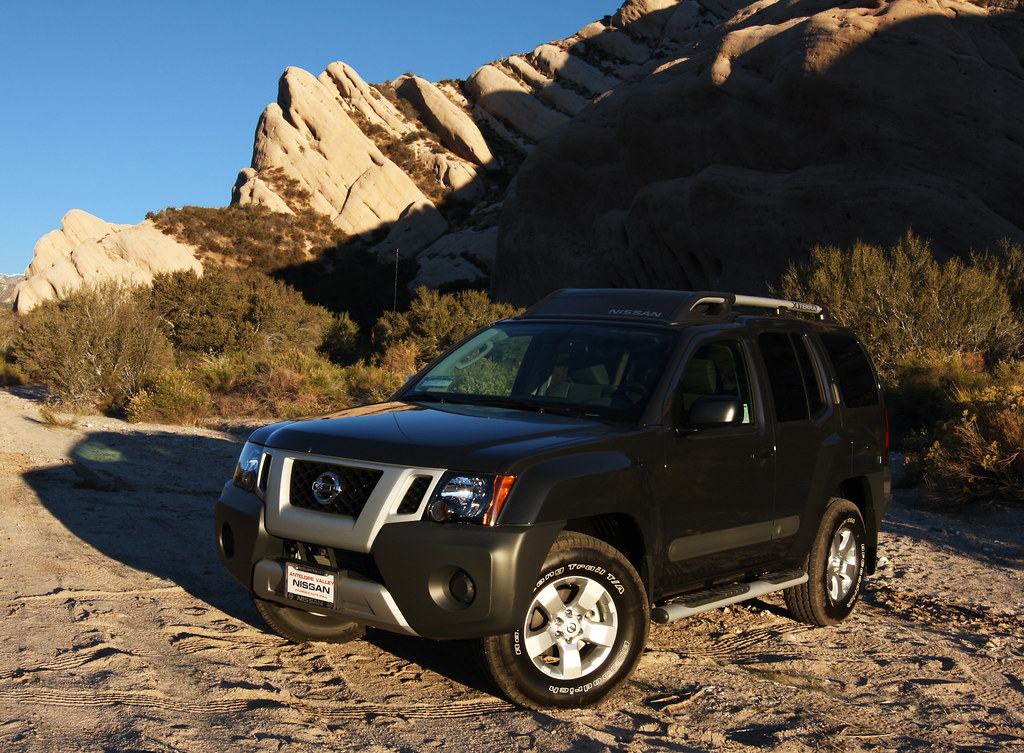
9. **Nissan Z**In a world increasingly dominated by electrification and complicated tech, the latest Nissan Z stands as a glorious homage to the classic sports car formula, proving that you absolutely do not need to reinvent the wheel to build something truly exceptional. This isn’t just a new car; it’s a modern icon that pays respectful tribute to its legendary Datsun 240Z heritage, while confidently stepping forward to challenge modern sports car rivals like the Toyota Supra and, yes, even the venerable Porsche 911.
Nissan, like many of its Japanese counterparts, understands that the driving experience is paramount. The Z keeps that beloved front-engine, rear-wheel-drive formula alive, a configuration cherished by enthusiasts for its predictable dynamics and engaging character. It’s a car built for drivers, by drivers, ensuring that every journey, whether a spirited blast down a winding road or a casual cruise, is imbued with that pure, unadulterated joy that defines a truly great sports car.
Under the hood, the Z is a powerhouse, boasting a twin-turbo 3.0-liter V6 that unleashes a formidable 400 horsepower. But Nissan didn’t stop there; they understood what real drivers truly desire, and thus, a six-speed manual transmission comes standard. This combination delivers not just blistering straight-line speed but also an immersive and tactile driving experience that connects you directly to the machine, making every shift and every acceleration a moment to savor.
Perhaps one of the most compelling arguments for the Nissan Z is its astounding value. With a starting price of just $42,970, this machine is, quite frankly, an absolute steal. It delivers performance, heritage, and pure driving engagement that would typically command a significantly higher price tag, making it an incredibly attractive proposition for anyone seeking Porsche-like thrills without the Porsche-like expenditure. The Z is a clear declaration that passion and performance are still alive and well, and surprisingly accessible.
Car Model Information: 2024 Nissan Z Performance Auto
Name: Nissan Z-car
Caption: 1970 Datsun 240Z (S30)
Aka: Nissan Fairlady Z (Japan)
Manufacturer: Nissan
Production: October 1969 – present
Assembly: ubl
Class: Sports car,Grand tourer
Layout: Front-engine, rear-wheel-drive layout,Front-engine, rear-wheel-drive layout#Front mid-engine, rear-wheel-drive layout
Predecessor: Datsun Sports
Categories: 1970s cars, 1980s cars, 1990s cars, 2000s cars, 2010s cars
Summary: The Nissan Z-series is a model series of sports cars manufactured by Nissan since 1969. The original Z was first sold on October of 1969 in Japan as the Nissan Fairlady Z at Nissan Exhibition dealerships that previously sold the Nissan Bluebird. It was initially marketed as the Datsun 240Z for international customers. Since then, Nissan has manufactured seven generations of Z-cars, with the most recent—simply known as the Nissan Z—in production since 2022. Main rival cars in the Japanese market included the Toyota Celica, Toyota Supra, Mitsubishi 3000GT and Mazda RX-7. The earlier models of the Nissan Z were built at the Nissan Shatai plant in Hiratsuka until 2000, while the later models (350Z and 370Z) are built at Oppama (2002–2004) and Tochigi (2004–present). Known for their looks, reliability, performance and affordability, every Z car has been sold in Japan as the Fairlady Z and elsewhere under the names Nissan Fairlady Z (S30), Nissan Fairlady Z (S130), Nissan 300ZX, Nissan 350Z, Nissan 370Z and Nissan Z.
Get more information about: Nissan Z-car
Buying a high-performing used car >>>
Brand: Nissan Model: Z
Price: $39,969 Mileage: 2,296 mi.
Read more about: Beyond the Sticker Price: Unveiling Cars with the Highest and Lowest Long-Term Maintenance Costs
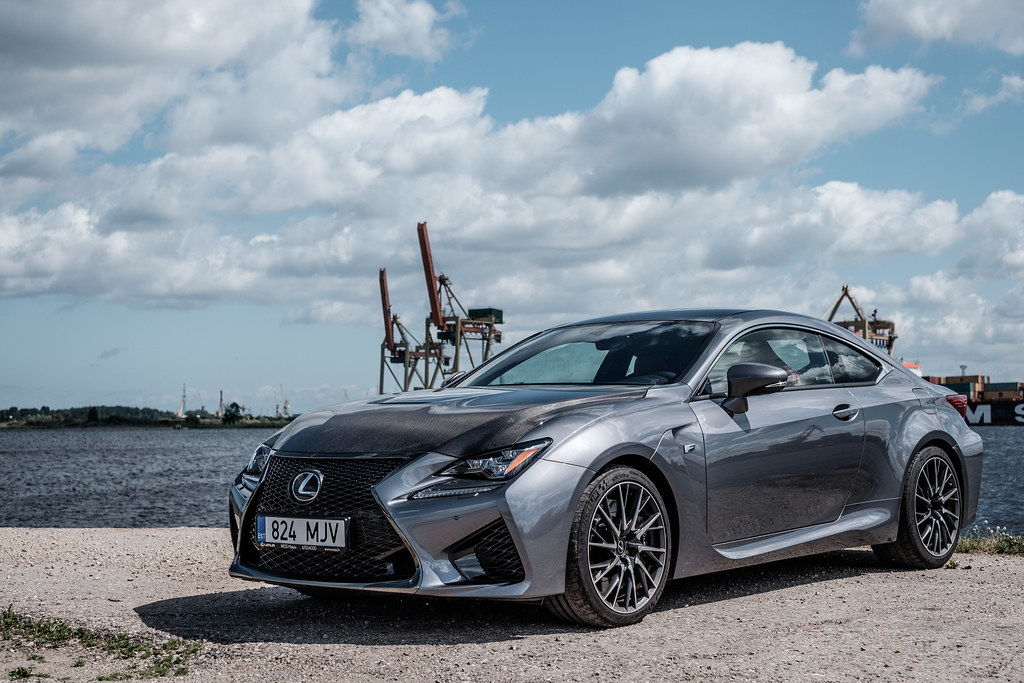
10. **Lexus RC F**When it comes to luxury performance coupes that offer both exhilarating track capability and the kind of unwavering reliability typically associated with Japanese engineering, the Lexus RC F presents a compelling alternative to its European rivals. It confidently stands shoulder-to-shoulder with formidable German machines like the BMW M4 or Audi RS5, but brings with it a distinct Lexus identity, marrying high-performance aspirations with a reputation for bulletproof dependability that sets it apart.
The RC F is a car of delightful contradictions, brilliantly balancing multiple roles with effortless grace. It’s at once a remarkably comfortable cruiser, perfect for eating up highway miles in refined luxury, and an unyieldingly track-capable sports car, ready to attack apexes with precision and confidence. This duality is a hallmark of thoughtful Japanese engineering, ensuring that whether you’re commuting or cornering, the RC F delivers an engaging and satisfying experience tailored to the moment.
Lexus’s stellar reputation for reliability is not just a footnote; it’s a cornerstone of the RC F’s appeal. While European performance cars are often lauded for their dynamic capabilities, the peace of mind that comes with Lexus ownership is a significant differentiator. This allows drivers to truly push the car’s limits on track or enjoy it daily, knowing that the meticulously engineered components are built to last, reinforcing the Japanese philosophy of durability and unwavering purpose.
With the RC F, you’re not just buying a fast car; you’re investing in a sophisticated, powerful, and dependable performance machine that truly delivers the best of both worlds. It offers an engaging driving experience, luxurious appointments, and a proven track record of reliability, making it a serious contender for enthusiasts who demand exhilarating performance without compromising on everyday usability or the long-term cost of ownership. It’s a compelling statement from Lexus that high performance doesn’t have to come with a trade-off in practicality or peace of mind.
Car Model Information: 2019 Acura RDX Technology Package
Name: Lexus RC
Caption: Lexus RC F Final Edition (USC10, Japan)
Manufacturer: Toyota
ModelCode: XC10
Production: October 2014 – present
ModelYears: 2015–2025
Assembly: Tahara, Aichi
Designer: Pansoo Kwon (2012)
Class: Sports car
BodyStyle: coupé
Layout: unbulleted list
Platform: Toyota N platform#New N
Related: unbulleted list
Engine: unbulleted list
Motor: unbulleted list
Abbr: on
Powerout: unbulleted list
Transmission: unbulleted list
Wheelbase: 2730 mm
Length: convert
Width: convert
Height: convert
Weight: convert
Predecessor: Lexus IS (XE20)#GSE20 / GSE21 (2008)
Sp: uk
Categories: 2020s cars, All-wheel-drive vehicles, All articles containing potentially dated statements, All articles with dead external links, All articles with unsourced statements
Summary: The Lexus RC is a compact executive two-door sport coupé manufactured by Lexus, Toyota’s luxury division. The RC which according to Lexus stands for “Radical Coupe” is a two-door coupé version of the Lexus IS (XE30). The RC is designated as the XC10 series. The RC borrowed styling from the LF-LC concept and was previewed by the LF-CC concept, being designed as a proposal by Pansoo Kwon from 2010 to early 2012 and approved by supervising designers Yasuo Kajino and Tatsuya Takei.
Get more information about: Lexus RC
Buying a high-performing used car >>>
Brand: Lexus Model: RC F
Price: $28,599 Mileage: 12,696 mi.
Read more about: Beyond the Sticker Price: Unveiling Cars with the Highest and Lowest Long-Term Maintenance Costs

11. **Datsun 240Z**Stepping back in time, we arrive at an undisputed legend that set the stage for many of the Japanese performance cars we celebrate today: the Datsun 240Z. When it first burst onto the scene in 1970, it wasn’t just another car; it was a revelation, challenging the established automotive order with its strikingly beautiful design that was instantly reminiscent of classic European icons like the Jaguar E-Type or the coveted Porsche 911. Yet, it did something truly revolutionary: it offered this allure at an incredibly accessible price point.
The 240Z’s genius lay in its ability to deliver sophisticated styling and genuinely enjoyable driving dynamics without demanding the exorbitant price tag of its European counterparts. When it debuted, it retailed for only $3,500, a figure that made high-performance, aesthetically pleasing sports car ownership a reality for a much broader audience. This ethos of delivering exceptional value without cutting corners is a hallmark of the Japanese automotive industry, proving that premium experiences don’t always require premium prices.
Beyond its stunning looks and affordable entry, the Datsun 240Z quickly earned itself an enviable reputation for unwavering reliability. Unlike some of its more temperamental European rivals, the 240Z was a car you could genuinely depend on, day in and day out. This inherent durability, coupled with maintenance costs that were remarkably reasonable compared to its European counterparts, solidified its appeal and cemented its status as a practical, yet thrilling, sports car. It was, and remains, a testament to thoughtful engineering.
The Datsun 240Z wasn’t just a car; it was a movement. It democratized the sports car experience, offering a blend of style, performance, and reliability that redefined expectations. Its legacy is etched into the DNA of countless Japanese performance machines that followed, proving that you could have a truly exhilarating and dependable vehicle without compromising your bank account. It’s an icon that reminds us that true driving pleasure can be found in accessible, well-engineered packages, echoing the core philosophy of Japanese car makers.
Car Model Information: 1972 Datsun 240Z
Name: Nissan Fairlady Z (Datsun 240Z, 260Z, and 280Z)
Aka: unbulleted list
Manufacturer: Nissan
Production: 1969–1978
Class: Sports car
Layout: Front-engine, rear-wheel-drive layout
Assembly: Hiratsuka, Kanagawa
BodyStyle: unbulleted list
Designer: Yoshihiko Matsuo
Predecessor: Datsun Sports
Successor: Nissan Fairlady Z (S130)
Caption: 1970–1973 Nissan Fairlady Z
Categories: 1970s cars, All Wikipedia articles written in American English, All articles with unsourced statements, Articles with short description, Articles with unsourced statements from February 2021
Summary: The Nissan S30, sold in Japan as the Nissan Fairlady Z but badged as the Datsun 240Z, 260Z, and 280Z for export, are 2-seat sports cars and 2+2 GT cars produced by Nissan from 1969 until 1978. The S30 was conceived of by Yutaka Katayama, the President of Nissan Motor Corporation U.S.A., and designed by a team led by Yoshihiko Matsuo, the head of Nissan’s Sports Car Styling Studio. It is the first car in Nissan’s Z series of sports cars.
The S30 had four-wheel independent suspension and a powerful straight-six engine with an overhead camshaft, features identified with far more expensive premium European sports cars and coupés such as the Jaguar E-Type and BMW 2800 CS, but absent from similarly priced sports cars such as the Alfa Romeo Spider, MGB and Opel GT, which had smaller four-cylinder engines and rear live axles. The S30’s styling, engineering, relatively low price, and impressive performance resonated with the public, received a positive response from both buyers and the motoring press, and immediately generated long waiting lists.
As a halo car, the S30 broadened the acceptance of Japanese carmakers beyond their image as producers of practical and reliable but prosaic and unfashionable economy cars. Datsun’s growing dealer network—compared to limited production imported sports cars manufactured by Jaguar, BMW, Porsche, Alfa Romeo, and Fiat—ensured both easy purchase and ready maintenance.
The S30 was initially sold alongside the smaller four-cylinder Datsun Sports, which was dropped from production in 1970. The S30 240Z is unrelated to the later 240SX, sold as the Silvia in Japan.
Get more information about: Nissan Fairlady Z (S30)
Buying a high-performing used car >>>
Brand: Datsun Model: 240Z
Price: $32,995 Mileage: 122,000 mi.
Read more about: When Slow and Steady Won the Race: 8 Unassuming Cars That Stole Our Hearts
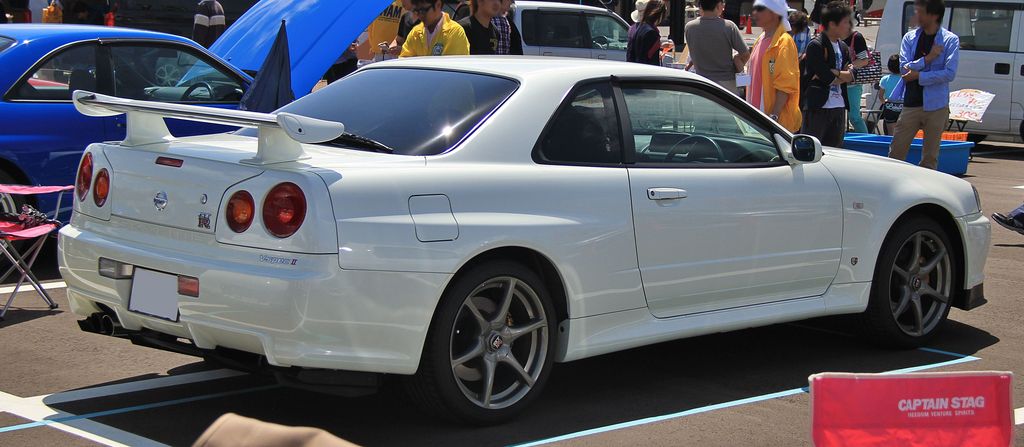
12. **Nissan Skyline GT-R**When we talk about Japanese performance legends, the Nissan Skyline GT-R is a name uttered with reverence, a machine whose very presence commands respect. While its modern descendant, the R35 GT-R, has earned its “Godzilla” moniker for fearlessly rivaling the Porsche 911 Turbo, the Skyline GT-R lineage is the very bedrock upon which that reputation was built. This is a car steeped in motorsport history, a true champion that shaped the global perception of Japanese engineering prowess and raw speed.
The Skyline GT-R, across its storied generations, wasn’t just a car built for the road; it was born from the crucible of competition. Its relentless pursuit of raw speed against the clock is legendary, boasting a long and illustrious history in motorsport, racking up an incredible array of wins in multiple categories. These triumphs weren’t just about collecting trophies; they were about proving its mettle against the toughest competition worldwide, establishing a legacy of performance that few vehicles, European or otherwise, can truly match.
This iconic machine perfectly embodies the methodical and calculated approach to engineering that defines Japanese performance cars. Every component, every technological innovation, was designed with a singular purpose: to achieve peak performance and unyielding durability. Whether it was dominating on the track or conquering a challenging special stage, the Skyline GT-R was built for rigorous conditions, showcasing a substance-over-style philosophy that prioritized functional excellence above all else.
Ultimately, the Nissan Skyline GT-R is far more than just a fast car; it’s a cultural phenomenon, a symbol of Japanese automotive innovation and an unwavering commitment to a stated brief. It delivered an engaging and electrifying driving experience that challenged the supremacy of established European titans, proving that true driving excitement, razor-sharp handling, and incredible performance don’t always require a six-figure price tag. It is a defining icon, a true thrill to pilot, and a constant reminder of Japan’s enduring contribution to the world of high-performance driving.
Car Model Information: 2019 Acura RDX Technology Package
Name: Nissan Skyline GT-R
Caption: 2002 Nissan Skyline GT-R V·spec II (BNR34)
Manufacturer: Nissan
Production: unbulleted list
Assembly: unbulleted list
Class: Sports car
Related: unbulleted list
Transmission: unbulleted list
Predecessor: Nissan Skyline#BLRA-3 Skyline Sport
Successor: Nissan GT-R
Categories: 1970s cars, 1980s cars, 1990s cars, 2000s cars, 24 Hours of Le Mans race cars
Summary: The Nissan Skyline GT-R is a Japanese sports car based on the Nissan Skyline range. The first cars named “Skyline GT-R” were produced between 1969 and 1972 under the model code KPGC10, and were successful in Japanese touring car racing events. This model was followed by a brief production run of second-generation cars, under model code KPGC110, in 1973. After a 16-year hiatus, the GT-R name was revived in 1989 as the BNR32 (“R32”) Skyline GT-R. Group A specification versions of the R32 GT-R were used to win the Japanese Touring Car Championship for four years in a row. The R32 GT-R also had success in the Australian Touring Car Championship, with Jim Richards using it to win the championship in 1991 and Mark Skaife doing the same in 1992, until a regulation change excluded the GT-R in 1993. The technology and performance of the R32 GT-R prompted the Australian motoring publication Wheels to nickname the GT-R “Godzilla” in its July 1989 edition. Wheels then carried the name through all the generations of Skyline GT-Rs, most notably the R34 GT-R, which they nicknamed “Godzilla Returns”, and described as “The best handling car we have ever driven”. In tests conducted by automotive publications, R34 GT-R have covered a quarter of a mile (402 metres) in 12.2 seconds from a standing start time and accelerated from 0–100 km/h (0–62 mph) in 4.4 seconds. The Skyline GT-R became the flagship of Nissan performance, showing many advanced technologies including the ATTESA E-TS all-wheel drive system and the Super-HICAS four-wheel steering. Today, the car is popular for import drag racing, circuit track, time attack and events hosted by tuning magazines. Production of the Skyline GT-R ended in August 2002. The car was replaced by the GT-R (R35), an all-new vehicle based on an enhanced version of the Skyline V36 platform. Although visibly different, the two vehicles share similar design features and are manufactured in the same factory. The Skyline GT-R was never manufactured outside Japan, and the sole export markets were Hong Kong, Singapore, Australia and New Zealand, in 1991, and the UK (in 1997, due to the Single Vehicle Approval scheme). They are also popular across the world as used Japanese imports. Despite this, the Skyline GT-R has become an iconic sports car as a grey import vehicle in the Western world (mainly the United Kingdom, Australia, New Zealand, South Africa, Ireland, Canada, and the United States). It has become notable through pop culture such as The Fast and the Furious, Initial D, Shakotan Boogie, Tokyo Xtreme Racer, Wangan Midnight, Need for Speed, Forza, Driving Emotion Type-S, Test Drive, and Gran Turismo. In 2019, Nismo announced that it would resume production of spare parts for all generations of the Skyline GT-R, including body panels and engines.
Get more information about: Nissan Skyline GT-R
Buying a high-performing used car >>>
Brand: Nissan Model: Skyline GT-R
Price: $28,599 Mileage: 12,696 mi.
Read more about: Unearthing the Beasts: 12 Forgotten ’90s Powerhouses That Still Outrun Modern Machines by 2025
So there you have it, folks – a deep dive into twelve sensational Japanese machines that don’t just rival the mighty Porsche 911, but in many ways, redefine what driving fun truly means. From the screaming V10 of the LFA to the democratic joy of the MX-5, the rally-bred aggression of the Evo, and the accessible thrills of the GR86, these cars are more than just metal and rubber. They are declarations of purpose, monuments to meticulous engineering, and proof positive that the visceral, unadulterated pleasure of driving doesn’t have to be exclusive, nor does it have to come with a Stuttgart badge. They deliver soul, character, and pure, unadulterated excitement, often for a fraction of the cost. So, next time you’re craving that open-road exhilaration, remember these legends from the Land of the Rising Sun – they’re ready and waiting to put a massive smile on your face.



